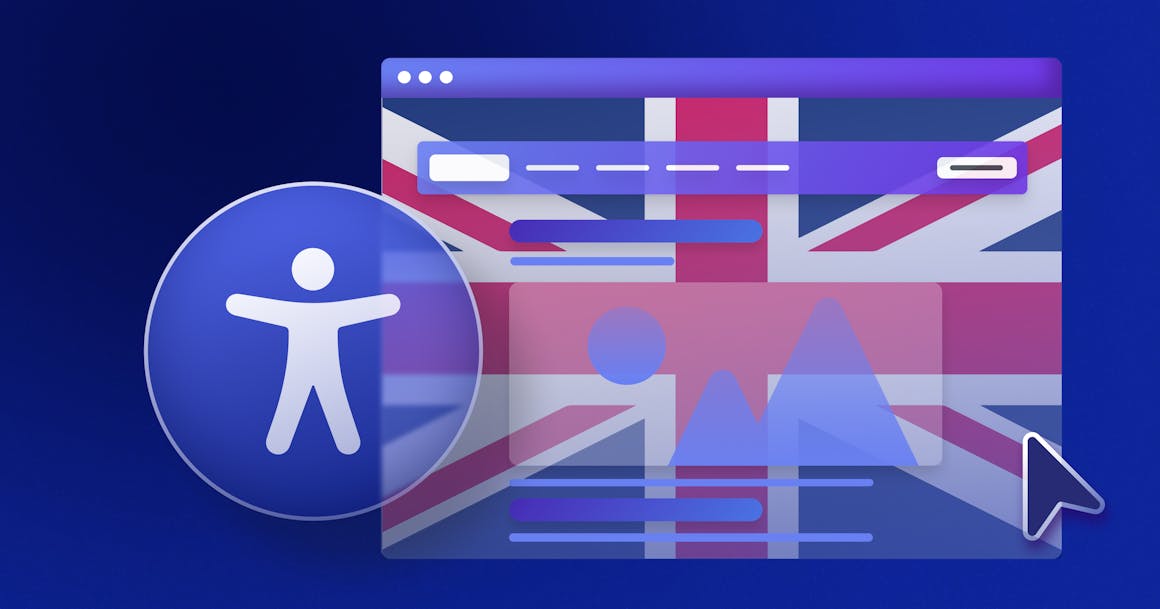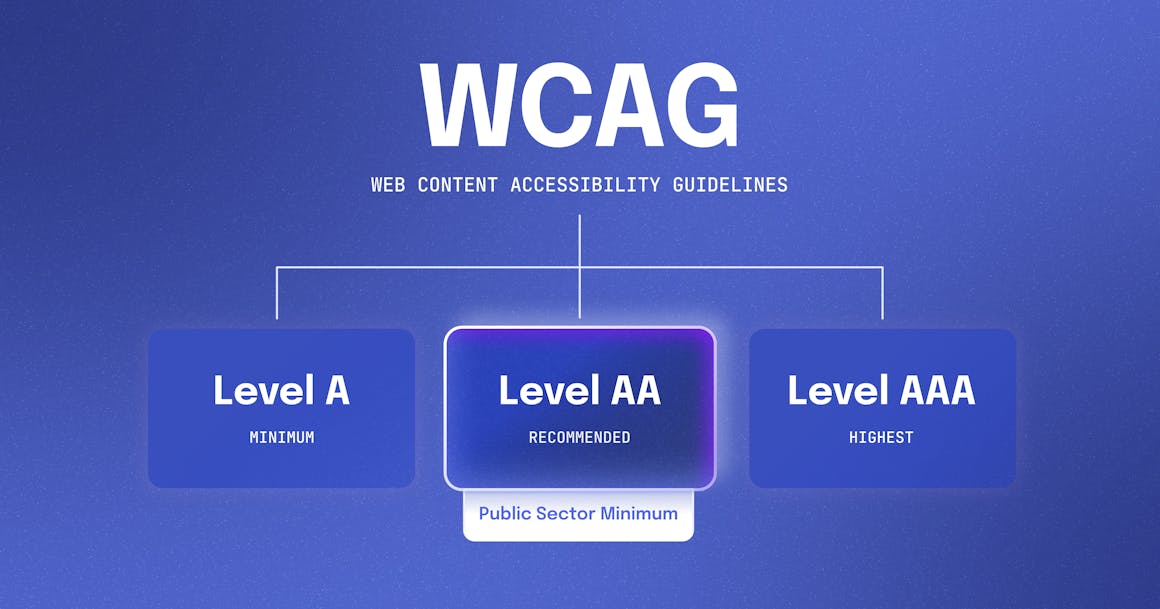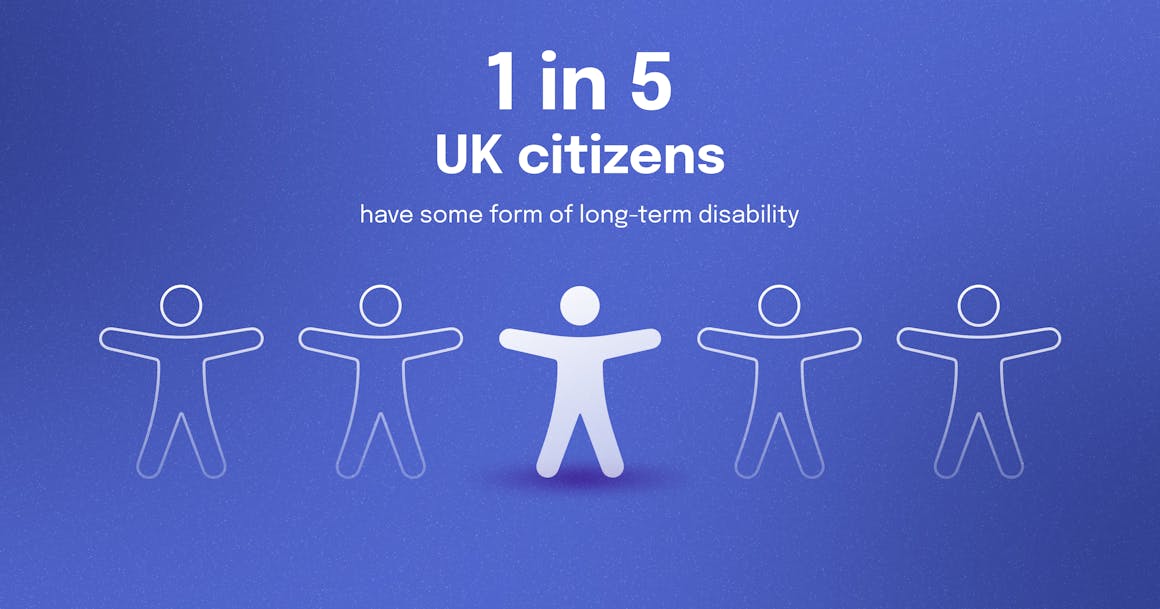What You Should Know About UK Accessibility Laws
- Digital Accessibility in the UK
- Web Accessibility Laws in the UK
- The Equality Act
- The BSI 8878 Web Accessibility Standard
- Public Sector Bodies (Websites and Mobile Applications) (No. 2) Accessibility Regulations
- The European Accessibility Act (EAA)
- Benefits of Complying with UK Accessibility Laws
- Taking Stock of Your Website’s Accessibility
What You Should Know About UK Accessibility Laws


Ready to see AudioEye in action?
Watch Demo
The United Kingdom has a number of digital accessibility laws that apply to both public and private organizations. All are designed to improve access to digital content for those with disabilities and must be followed. We’ll provide an overview of the UK’s accessibility laws below.
Digital accessibility has quickly become a priority for businesses across the UK. With 16 million people in the UK having a disability, organizations across the country are trying to ensure everyone has equal access to their website.
The change in priority stems from both wanting to provide a more accessible experience for users as well as to avoid accessibility lawsuits. And with the number of accessibility lawsuits increasing in the last few years, organizations are ramping up efforts to create a more accessible experience for users.
The UK has several laws that establish requirements for digital accessibility. Below, we’ll review which accessibility laws apply to your business and what you need to know about each one to be compliant. But first, a quick overview of digital accessibility in the UK.

Digital Accessibility in the UK
Digital accessibility (also known as website accessibility) is a requirement in the UK — for both public and private sector organizations. The accessibility laws are based on the international standards for accessibility: the Web Content Accessibility Guidelines (WCAG).
WCAG includes a number of success criteria that explain how to make digital content more accessible to those with visual, auditory, physical, or cognitive disabilities or impairments. Measuring digital content against WCAG success criteria provides you with a good indication of how accessible your website is for disabled people.
These technical standards of accessibility are grouped into four categories:
- Perceivable: Users should be able to easily see and understand your digital content. Content should not be inaccessible to those with hearing loss, vision loss, or other disabilities.
- Operable: Digital content should be responsive and easy to navigate for all users. For example, keyboard users should be able to navigate through your digital content using only keyboard shortcuts. Similarly, screen readers should provide users with a seamless experience.
- Understandable: Your digital content should be organized and set up in a way that makes it easy to use and easy to navigate. Users should also be able to understand your content in multiple languages.
- Robust: Because many users rely on assistive technologies to navigate the web, your digital content must be robust enough to be compatible with these tools.
Commonly known as the POUR principles, these technical standards are split into three different conformance levels: Level A, AA, and AAA (Level A is considered the minimum level of accessibility). There are also different versions of WCAG with the latest edition being WCAG 2.2, which was released in late 2023.
UK businesses can’t afford to ignore WCAG. In fact, a 2020 survey by Scopes found that 21% of working-age adults and 42% of pension-age adults in the UK are disabled. And those numbers don’t include people with temporary or situational disabilities.
By following the latest WCAG standards, businesses can make their digital content more accessible to everyone — and avoid leaving a potentially large percentage of their customers behind.

Web Accessibility Laws in the UK
There are four web accessibility laws in the UK that organizations need to comply with, including the Equality Act (2010), Public Sector Bodies (Websites and Mobile Applications) (No. 2) Accessibility Regulations, BSI 8878 Web Accessibility Standard, and the European Accessibility Act (EAA). We’ll review each of those in more detail below.
The Equality Act
One of the key pieces of web accessibility legislation in the UK is the Equality Act of 2010, which replaced the Disability Discrimination Act 1995 across the UK (with the exception of Northern Ireland).
The Equality Act 2010 provides protection for people discriminated against because they are perceived to have, or are associated with someone who has a “protected characteristic”, including:
- Age
- Religion
- Disability
- Gender
- Partnerships (marriage and civil)
- Race
- Sex
- Sexual orientation
Under the Equality Act, public businesses — including local authorities, police authorities, and hospital trusts — must take “reasonable adjustments” to accommodate people with disabilities. Additionally, organizations that provide goods or services must provide an equal, accessible website experience to all users.
While the Equality Act does not include specific technical standards organizations must follow, organizations can comply with the Equality Act by meeting WCAG 2.1 Level A accessibility standards.
The BSI 8878 Web Accessibility Standard
Like the Americans with Disabilities Act (ADA), the Equality Act requires businesses to make “reasonable accommodations” for people with disabilities — but it doesn’t provide any technical standards for digital accessibility.
In 2010, the British Standards Institution (BSI) introduced BSI 8878 (PDF) to provide some guidance for businesses looking to make their digital content accessible. BSI 8878 does not replace WCAG or include any specific guidelines, but it does suggest a process for implementing WCAG successfully.
According to BSI 8878, organizations should:
- Appoint a “web accessibility champion” who can develop an accessibility policy.
- Consider accessibility at all stages of development, including post launch.
- Establish a process for “reasonably justifying” decisions.
- Carry out accessibility research and testing, including an accessibility audit.
- Publish clear information for users via an accessibility statement.
-digital-accessibility.jpg?ixlib=gatsbyFP&auto=compress%2Cformat&fit=max&w=1160&h=609)
Public Sector Bodies (Websites and Mobile Applications) (No. 2) Accessibility Regulations
Introduced in the UK in 2018, the Public Sector Bodies Accessibility Regulations mandate that public sector websites and mobile apps must be accessible to all users, especially those with disabilities. According to Gov.uk, public sector bodies include:
- Central government and local government organizations.
- Some charities and non-government organizations.
As part of the requirement, service providers must include an accessibility statement that is regularly updated and includes explanations for any content that is not accessible, as well as a list of accessible alternatives and a contact form to report issues.
There are a few exemptions to the Public Sector Bodies Accessibility Regulations. For example, public sector bodies do not have to comply with the accessibility requirement if doing so would impose a “disproportionate burden” on the organization. However, they must undergo a formal assessment in order to make this claim.
The European Accessibility Act (EAA)
While the UK is no longer a part of the European Union, it’s important to discuss how the EAA impacts UK businesses.
The EAA required organizations in Europe to adopt the technical standards included in the legislation by June 2022. Additionally, the EU created their own accessibility standards, EN 301 549 which references POUR principles as well as additional accessibility standards. All EU member countries have a legal obligation to follow the standards included in the EAA by June 2025 or risk potential legal action.
While the UK does not currently have plans to enforce EAA regulations, UK businesses that offer services to EU nations need to comply with EAA standards. This decreases the risk of your organization facing legal lawsuits or fines from EU countries for non-compliance.
Benefits of Complying with UK Accessibility Laws
While complying with UK accessibility laws is a legal requirement, it does yield a number of benefits, including:
- Reduce the risk of legal action: Non-compliance with accessibility laws can result in expensive fines and reputation-damaging lawsuits.
- Create a more inclusive experience: All users — regardless of their abilities — should have equal access to digital content. Following accessibility laws helps you to find and fix accessibility issues that hinder disabled users’ experience. This ultimately increases digital inclusion and overall user satisfaction.
- Reach a wider audience: Making your digital content more accessible opens it up to a bigger audience. This results in more opportunities to expand your customer base as well as more revenue opportunities.
- Increase SEO rankings: By finding and fixing accessibility issues on your site, you can improve your SEO rankings. Essentially, search engine crawlers get a better understanding of your digital content which allows them to rank it more appropriately. With higher SEO rankings, you open the door for more people to find your content.
Taking Stock of Your Website’s Accessibility
For public bodies in the UK, WCAG conformance is a requirement. But every organization can benefit from applying the guidelines to their own digital content. This includes expanding the reach of your audience, avoiding legal action, and providing a more accessible, inclusive online space.
The first step to delivering an accessible website is understanding what might be a barrier for people with disabilities. That’s where AudioEye comes in.
With our free Website Accessibility Checker, you’ll get an understanding of how accessible your current digital content is. Our checker evaluates your content against more than 400 accessibility errors and provides an overview of how accessible your current site is.
From here, AudioEye’s Automated Accessibilty Platform, automatically fixes common accessibility issues. And to help uncover additional accessibility violations that cannot be detected by automation alone, our team of accessibility experts — which includes people with disabilities — can perform an Expert Audit of key pages on your website. The result: digital content that complies with all UK accessibility laws.
Ready to see how accessible your website is for people with disabilities? Get a free scan of your site by entering the URL below.
Ready to see AudioEye in action?
Watch Demo
Ready to test your website for accessibility?
Share post
Topics:
Keep Reading

What’s New in WCAG 2.2: Changes and Updates from WCAG 2.1
Meeting WCAG 2.1 requirements doesn’t mean you conform to WCAG 2.2. Find out what’s changed and how to adapt your site or app.
compliance
April 07, 2025

ADA Demand Letter: What It Means & What to Do If You Get One
ADA demand letters are becoming more common. Understand what they are, how to respond, and how to reduce your legal risk moving forward.
compliance
March 28, 2025

Why an Accessibility Widget for Your Website Isn’t Enough — and What to Do Instead
Widgets seem like an easy way to ensure compliance with accessibility regulations, but your site/app needs more than they offer. Here’s how to approach it.
accessibility
compliance
March 25, 2025
